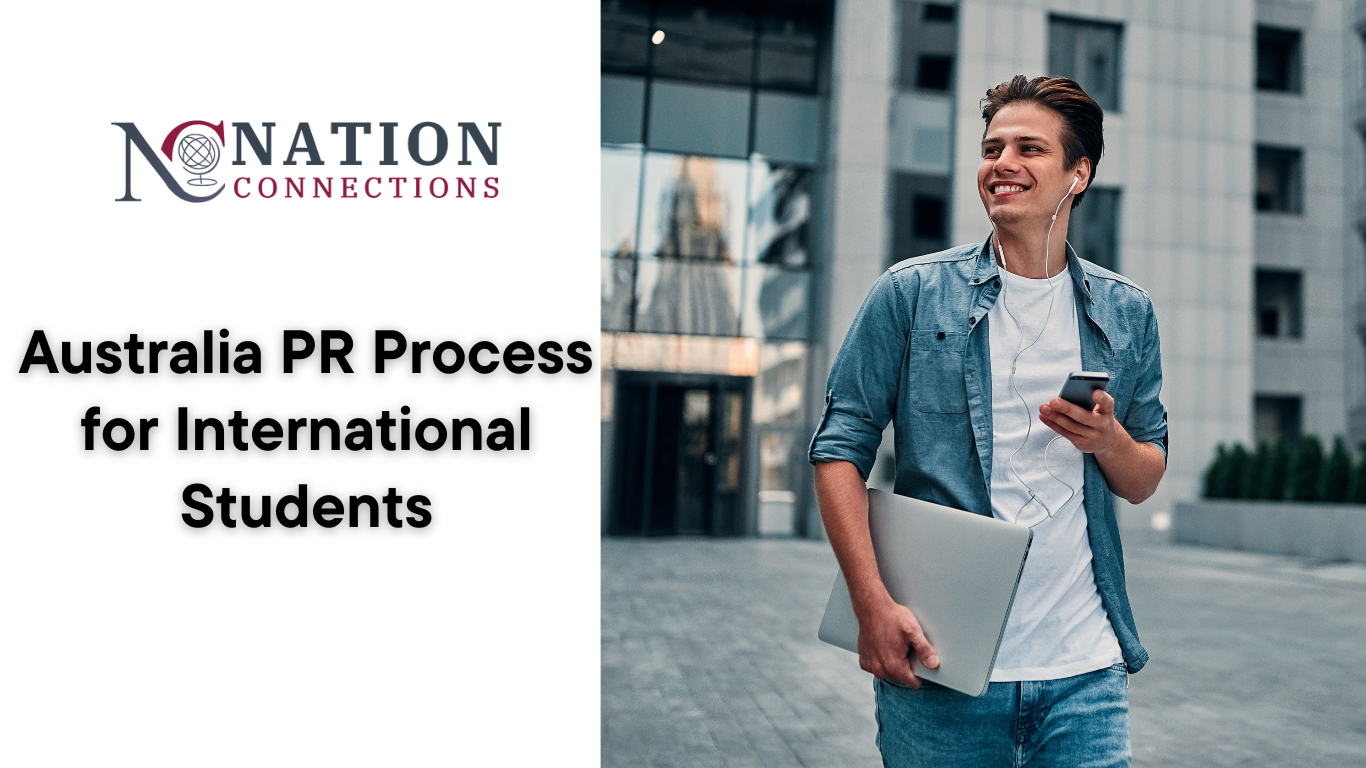Australia remains one of the top destinations for international students due to its high-quality education, safe environment, and clear pathway to permanent residency (PR). For many students, studying in Australia is just the beginning of a journey that leads to becoming a permanent resident. If you’re wondering how to go from student visa to PR, this blog will break down the entire Australia PR process for international students in simple and clear steps.
Australia offers permanent residents numerous benefits:
Access to Medicare (government-subsidized healthcare)
Work and live anywhere in Australia
Pathway to Australian citizenship
Sponsor family members to join you
These perks make gaining PR a priority for many international students.
Choose a course that is:
CRICOS-registered
At least 2 years in duration
Relevant to occupations on the Medium and Long-term Strategic Skills List (MLTSSL)
Courses like Nursing, IT, Engineering, and Accounting are popular choices.
This visa allows students to stay and work in Australia temporarily after their studies. It has two streams:
Graduate Work Stream: For students with qualifications related to occupations on the skills list.
Post-Study Work Stream: For students who have completed a bachelor’s degree or higher.
Benefits:
Stay duration: 18 months to 4 years
Work full-time and gain experience
While on the 485 visa, work in your field of study to accumulate skilled work experience, which enhances your points for PR.
For most PR visas, you’ll need to prove English proficiency. Common tests include:
IELTS
PTE Academic
TOEFL
Higher scores can earn you more points.
This is done through a relevant assessing authority for your occupation (like Engineers Australia, ACS, or CPA Australia).
Each authority has its own criteria based on qualifications and work experience.
You submit an EOI via SkillSelect, which is not a visa application but a way to show interest in applying for PR. You’ll need to:
Select your visa type (usually 189, 190, or 491)
Include details like education, experience, and language skills
Calculate your points (you need at least 65 points to be eligible)
If your EOI is successful, the Department of Home Affairs will send you an invitation to apply for PR. Invitations are based on:
Points score
Occupation demand
Availability of state nominations
Common visa types for students include:
Subclass 189 (Skilled Independent Visa)
Subclass 190 (Skilled Nominated Visa)
Subclass 491 (Skilled Work Regional – Provisional Visa)
Each visa has different requirements and benefits. For example, the 190 requires state nomination, while the 491 is for regional areas.
Once your application is submitted:
You may be asked for biometrics, police checks, and health exams
Processing times vary (typically 6–12 months)
Upon approval, you’ll receive a PR grant letter. Congratulations! You can now enjoy the full benefits of living in Australia permanently.
Study in regional Australia: It gives extra points.
Choose courses aligned with in-demand occupations.
Keep your English language scores high.
Gain relevant work experience as soon as possible.
Stay updated with changing immigration rules.
| Visa Type | Description | Eligibility | Stay Duration |
|---|---|---|---|
| Subclass 189 | Independent skilled migration | 65+ points, no sponsor needed | Permanent |
| Subclass 190 | State-nominated | 65+ points, state nomination | Permanent |
| Subclass 491 | Regional provisional visa | Sponsored by state/family in regional area | 5 years (pathway to PR) |
What is the minimum score needed for PR in Australia?
You need at least 65 points to be eligible, but higher scores increase your chances.
Can I apply for PR directly after studying in Australia?
You usually need work experience via the 485 visa before becoming eligible for PR.
Which course is best for PR in Australia?
Courses like Nursing, Engineering, Information Technology, and Accounting are highly valued.
How long does the Australia PR process take?
From graduation to PR approval, it can take 2–4 years depending on your path and visa type.
Can I include family in my PR application?
Yes, you can include your partner and dependent children.
Is it easier to get PR in regional Australia?
Yes, regional areas offer extra points and have more relaxed criteria.
If you’re an international student dreaming of building a future in Australia, following the right Australia PR process for international students can make your path smoother. Plan ahead, make strategic choices, and keep an eye on immigration updates to boost your chances.




